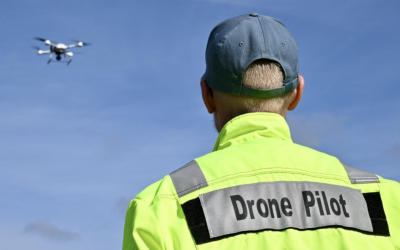Political initiative brings concrete projects, digital networking, and joint exercises for greater security in the border region
Disasters do not stop at national borders—forest fires, floods, and blackouts threaten people and infrastructure alike. Against this backdrop, Bavaria’s Interior Minister Joachim Herrmann and State Secretary for Finance Martin Schöffel have presented a new action plan for Bavarian-Czech cooperation in disaster control. The aim is to integrate cross-border protection in the event of major disasters even more closely and to professionalize the cooperation between the emergency services in the long term.
The plan is based on a risk analysis of the border region, which was funded with €40,000 from EU funds. This identified weaknesses in communication, organization, and technology – and developed solutions that are now being translated into concrete projects. Initial findings are already being incorporated into the large-scale German-Czech forest fire exercise on September 27 in the Selb–Aš–Libá area, in which more than 450 emergency personnel are participating.
Political dimension: Safety as a European joint project
With this action plan, Bavaria is going a step beyond traditional neighborly assistance. Schöffel emphasized that “close cooperation, especially in the area of fire and disaster control, must not be hampered by borders and jurisdictions.” The political message is clear: disaster control in Europe only works if national systems are compatible.
Interior Minister Herrmann underscored the importance of the project: “Damage and disasters know no borders. That is why cross-border cooperation with our European neighbors in fire and disaster control is an important concern.” This perspective makes it clear that disaster control is increasingly understood as part of the European security architecture.
Technological perspectives: From control centers to drone deployment
Particular attention is being paid to technical networking. In the future, Czech control centers will be directly linked to the integrated control centers in Bavaria. This will allow for rapid alerting and coordination in an emergency without time-consuming detours.
The joint use of modern technologies is also being promoted:
- Drones are to be used to assess the situation in terrain that is difficult to access.
- Flashover containers enable realistic training sessions for firefighters.
- Mobile 5G transmitters ensure that even in remote regions, a stable data connection is available for situation reports, voice and video transmission.
The Director General of the Czech Fire Department, Lieutenant General Vladimír Vlček, emphasized: “We can only provide rapid and efficient assistance if we take a coordinated and effective joint approach to dealing with emergencies.”
Digitalization as the key to efficiency and resilience
A central element of the action plan is digitalization in disaster control. Cross-border risk analysis has shown that different software solutions, radio standards, and communication platforms have made deployment in emergencies difficult up to now.
In the future, networking via digital interfaces will enable a shared real-time situation picture – from alerting and resource management to documentation. Mobile 5G transmitters and encrypted data transmissions enable the transmission of live drone images, sensor data, or GPS tracking of emergency services directly to the control centers of both countries.
In addition, digitalization opens up new perspectives for AI-supported evaluation, for example in the detection of fire sources, the simulation of spread scenarios, or the optimization of evacuation routes. In the future, this could also pave the way for predictive disaster control systems that not only detect hazards but also calculate them in advance.
Practical implementation: large-scale exercise as a stress test
The forest fire exercise as part of Bavarian Fire Department Action Week 2025 is more than just a symbolic kick-off. It serves as a real-life stress test for the new collaboration. The focus is on joint alarm routes, communication between incident commanders, air support, and operational cooperation at the border.
The exercise will test how 450 emergency personnel from Bavaria, Saxony, and Czechia can work together in an emergency—a scenario that could become reality at any time given the increasing number of dry summers and climate-related vegetation fires.
Strategic perspectives: blackouts, critical infrastructure, and resilience
The initiative has a signal effect beyond fire protection. In addition to forest fires, blackouts and the protection of critical infrastructure (KRITIS) are also being addressed. With the entry into force of the KRITIS umbrella law and the upcoming NIS2 implementation, the number of companies affected is increasing significantly – many of which are located in border regions.
The interlinking of disaster control and KRITIS protection could mean that cross-border exercises in the future will not only include forest fire or flood scenarios, but also longer-term power outages or cyber consequences.
Prospects for emergency services and volunteers
For fire departments and aid organizations in Bavaria and Czechia, the action plan means above all: more professionalism, more training, and more responsibility. Herrmann emphasized the role of volunteers: “The high level of commitment of our mostly volunteer emergency services is the backbone of our aid system. This commitment cannot be taken for granted.”
New technologies, digital networking, and cross-border training provide the forces with tools that make their work safer and more efficient—at the same time, the demands on training and resilience are growing.
From pilot project to blueprint for Europe
The new action plan is more than a regional project between Bavaria and Czechia. It exemplifies the transformation of disaster control in Europe:
- from nationally limited responsibilities to common standards,
- from classic firefighting operations to integrated technology and digital support,
- and from reactive measures to preventive networking and resilience planning.
If the planned measures take effect, the German-Czech border region could become a European model region for digital, cross-border disaster control – with potential for transfer to other border regions of the EU.


